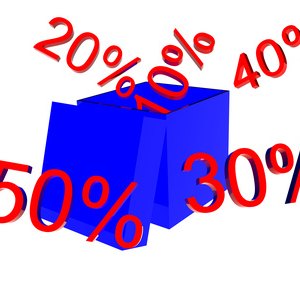
A mixed interest rate is one of three alternative interest rate structures that are used for mortgage loans in the U.S. Different interest rate structures are needed for these loans because the financial qualifications of borrowers vary so widely and market interest rates change frequently. Each rate structure has pros and cons, differing degree of financial risk and different costs.
Fixed Rate
A fixed interest rate is one type of rate structure. Fixed-rate loans apply the same interest rate over the entire loan period, i.e., the interest rate remains fixed. This interest rate structure has the lowest risk for a borrower because the interest cost over the entire period of the loan is known in advance. Fixed interest rates are usually selected by borrowers who are in the best financial condition. The cost of such loans is usually, but not always, the lowest. These loans are most favorable when interest rates are relatively low.
Variable Rate
Another structure is the variable interest rate. For these loans, the interest rate varies over time, based on the specific terms and conditions of the loan agreement. This interest rate structure has the highest risk because market rates may vary over the loan period, and your rate is usually adjusted annually. Consequently, future interest rates are unknown. Such loans are used primarily when interest rates are relatively high.
Mixed Rate
The third rate structure is the mixed interest rate. A mixed interest rate loan applies both fixed and variable rates during specified periods of the loan. Such loans typically apply the fixed rate during the initial loan period. This is usually a three- to five-year period. The variable rate is typically applied during the remaining loan period. These loans are also frequently referred to as two-step loans.
Cost
The purpose of mixed interest rate loans is to reduce the initial cost of the loan, when the rate is fixed. Compared to a variable interest rate, the mixed interest rate reduces the financial risk of the loan to some degree. Consequently, the loan is affordable to more borrowers. The variable rate period is intended to raise the interest rate cost, thus offsetting the lower cost during the fixed rate period---and financially benefiting the lender. Thus, the loan risk rises after the fixed rate period has expired.
Risk
Mixed interest rate loans are usually used to increase loan affordability to lesser-qualified borrowers. The lower initial rate allows more borrowers to qualify. When the rate becomes fixed, it is hoped that the borrowers will be able to afford a higher loan cost if interest rates increase. The bottom line for all borrowers is to make an economic assessment of all three rate alternatives before making a financial decision.
References
Writer Bio
Charles Doering is a consulting economist who began writing in 1985. He wrote articles in the "Wall St. Journal" and was editor of "California Energy Market Insight" newsletter. He has written business and finance articles for eHow. Doering holds a Bachelor of Science in business administration from Central Michigan University and a Master of Arts in economics from the University of Colorado, Boulder.

